Caleb Levy
Classic Graph Structural Features Outperform Factorization-Based Graph Embedding Methods on Community Labeling
Jan 20, 2022
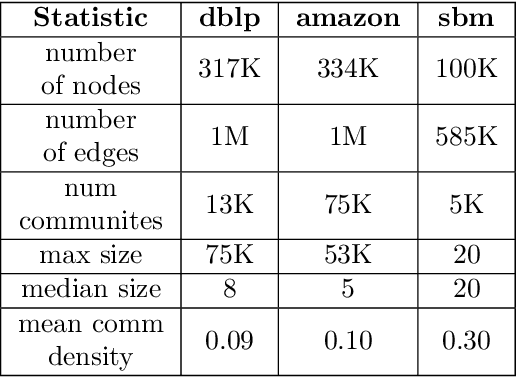
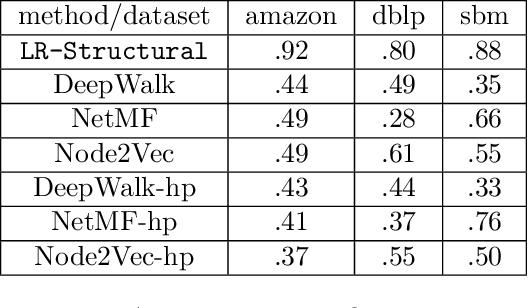

Abstract:Graph representation learning (also called graph embeddings) is a popular technique for incorporating network structure into machine learning models. Unsupervised graph embedding methods aim to capture graph structure by learning a low-dimensional vector representation (the embedding) for each node. Despite the widespread use of these embeddings for a variety of downstream transductive machine learning tasks, there is little principled analysis of the effectiveness of this approach for common tasks. In this work, we provide an empirical and theoretical analysis for the performance of a class of embeddings on the common task of pairwise community labeling. This is a binary variant of the classic community detection problem, which seeks to build a classifier to determine whether a pair of vertices participate in a community. In line with our goal of foundational understanding, we focus on a popular class of unsupervised embedding techniques that learn low rank factorizations of a vertex proximity matrix (this class includes methods like GraRep, DeepWalk, node2vec, NetMF). We perform detailed empirical analysis for community labeling over a variety of real and synthetic graphs with ground truth. In all cases we studied, the models trained from embedding features perform poorly on community labeling. In constrast, a simple logistic model with classic graph structural features handily outperforms the embedding models. For a more principled understanding, we provide a theoretical analysis for the (in)effectiveness of these embeddings in capturing the community structure. We formally prove that popular low-dimensional factorization methods either cannot produce community structure, or can only produce ``unstable" communities. These communities are inherently unstable under small perturbations.
Fair Classification with Group-Dependent Label Noise
Oct 31, 2020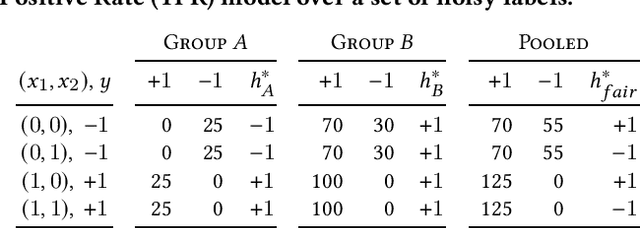

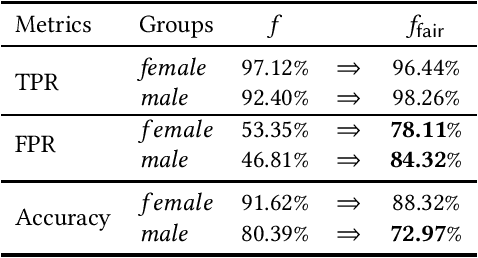
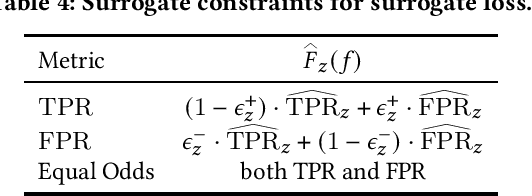
Abstract:This work examines how to train fair classifiers in settings where training labels are corrupted with random noise, and where the error rates of corruption depend both on the label class and on the membership function for a protected subgroup. Heterogeneous label noise models systematic biases towards particular groups when generating annotations. We begin by presenting analytical results which show that naively imposing parity constraints on demographic disparity measures, without accounting for heterogeneous and group-dependent error rates, can decrease both the accuracy and the fairness of the resulting classifier. Our experiments demonstrate these issues arise in practice as well. We address these problems by performing empirical risk minimization with carefully defined surrogate loss functions and surrogate constraints that help avoid the pitfalls introduced by heterogeneous label noise. We provide both theoretical and empirical justifications for the efficacy of our methods. We view our results as an important example of how imposing fairness on biased data sets without proper care can do at least as much harm as it does good.
 Add to Chrome
Add to Chrome Add to Firefox
Add to Firefox Add to Edge
Add to Edge